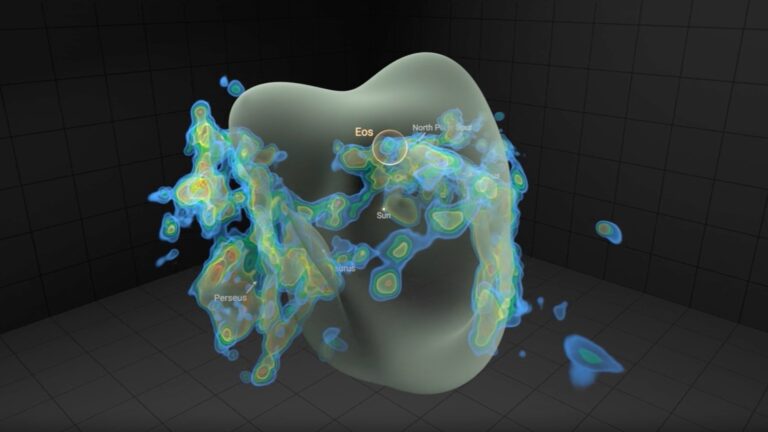
NASA faces critical issue that could jeopardize all future SpaceX missions – Jason Deegan
2025-04-19T09:00:40Z
As humanity races toward establishing a permanent presence on other planets, an unexpected challenge has emerged that could hinder the future of space exploration: time management. … Continue Reading →
As humanity races toward establishing a permanent presence on other planets, an unexpected challenge has emerged that could hinder the future of space exploration: time management. The clocks and watches we rely on here on Earth may not work in space, particularly as we venture into the complex environments of the Moon, Mars, and beyond. This issue, if not addressed, could jeopardize the success of future SpaceX missions and any other ambitious space projects on the horizon.
The Extraterrestrial Time Challenge
Here on Earth, timekeeping is a simple task, with systems like atomic clocks and time zones seamlessly integrated into our daily routines. However, in space, things get complicated. The unique gravity, rotation, and orbital dynamics of celestial bodies affect the passage of time in ways we may not have anticipated. For example, on the Moon, time actually ticks faster than on Earth. Due to its weaker gravity, clocks on the Moon run about 56 microseconds faster each day. While this discrepancy may seem tiny, it can have significant consequences for mission coordination and communication.
This is where relativity—specifically, Albert Einstein’s theory—comes into play. The theory explains that time is not absolute but relative, influenced by factors like gravity and velocity. In space, where spacecraft experience varying gravitational fields, acceleration, and microgravity, these relativistic effects become crucial. To address this, NASA scientists are developing Relativistic Time Transformation (RTT) systems to synchronize time across various locations in space, ensuring missions run smoothly and without timing issues.
A New Concept: Lunar Time
As we look toward ambitious lunar colonization projects, like NASA’s Artemis program, the need for a standardized lunar time system is becoming increasingly urgent. Researchers are proposing the creation of a Lunar Time Scale (LTS) and a Lunar Centric Reference System (LCRS) to account for the Moon’s lower gravity, its orbit around Earth and the Sun, and gravitational anomalies known as mascons.
These systems would ensure accurate time synchronization for lunar missions, enabling precise data transmission and the seamless operation of lunar bases. Given the Moon’s unique characteristics, having a unified time system will be essential for coordinating activities between lunar bases, orbiters, and Earth. Additionally, it will help researchers accurately compare data, from studying the Moon’s geology to monitoring seismic activity.
Implications for Space Exploration
The creation of a unified time system for the Moon—and potentially other celestial bodies—has profound implications for space exploration. Precise timekeeping is essential for ensuring accurate positioning, minimizing communication delays, and preventing errors during mission-critical phases. Whether it’s a lunar base or a Mars rover, precise synchronization between various systems and teams is critical for mission success.
Additionally, if multiple countries or organizations are involved in lunar exploration, having a common time standard will allow seamless data sharing and collaboration. This is vital for large-scale scientific studies and for comparing findings across different missions, ensuring that all research can be compared accurately and reliably.
Beyond the Moon: Martian Time
The challenges of timekeeping don’t end on the Moon. As we set our sights on Mars, we’ll encounter new temporal complexities. Martian Coordinated Time (MCT) and the Darien Calendar are already being developed to address the unique characteristics of Mars’ rotational period and orbital dynamics.
Mars’ day, known as a “sol,” is slightly longer than Earth’s, lasting about 24 hours and 39 minutes. For Mars missions, a reliable time system will be critical for maintaining consistency in operations, ensuring that crewed missions can function smoothly, and that data gathered from Mars can be interpreted accurately.
The Impact on Watch Technology
One of the most interesting offshoots of this challenge is its impact on watch technology. Future space missions will require timekeeping devices that are far more sophisticated than anything we use today. These watches will need to adapt to the relativistic effects of time and handle extreme environments on the Moon or Mars.
Space watches will evolve from mere timepieces to essential instruments that sync with multiple time systems across different celestial bodies. Engineers are already exploring how to integrate atomic clocks into watches that can withstand the harsh conditions of space, such as extreme temperatures, radiation, and low pressure. These watches could play a critical role in the navigation and success of space missions, making them far more than just tools to check the time.
Technical Challenges to Overcome
Creating timekeeping devices that work accurately across different planetary environments is no easy task. These devices must maintain precision despite varying gravitational forces, extreme temperatures, and other operational conditions. Engineers are currently exploring solutions like miniaturized atomic clocks and advanced materials that can handle the tough space conditions. Ensuring the reliability of these devices is paramount for the success of long-duration missions.
The new field of space horology is emerging, with watchmakers designing timepieces not only for timekeeping but also as essential tools for navigation and mission management. As space exploration advances, these specialized watches will play a key role in ensuring that astronauts and future settlers can manage time accurately in ways never before imagined.
The Importance of Temporal Precision for Humanity’s Future
Accurate time management is more than just a technical necessity—it’s the backbone of every mission to explore and settle space. As humanity looks to build a future on the Moon, Mars, and beyond, precise timekeeping will be critical to ensuring that all operations run efficiently, safely, and effectively.
From coordinating activities between multiple space agencies to ensuring reliable communications across vast distances, the ability to synchronize time will be key to the success of any space mission. Without it, our ambitions to explore other worlds could face significant setbacks.
Conclusion: Rewriting the Clock for the Stars
NASA’s efforts to develop Relativistic Time Transformation systems and standardized time scales for lunar and Martian environments represent a pivotal step in overcoming one of the final frontiers of space exploration. As engineers and scientists continue to innovate, the integration of advanced timekeeping technologies will be vital for ensuring the success of all future SpaceX missions and beyond.
In the end, the future of space exploration depends not only on rocket technology and spacecraft design but also on our ability to master the fundamental concept of time. With the right innovations, we are setting the stage for a future where humans can live and work on other planets—one tick of the clock at a time.
Auto-posted from news source






